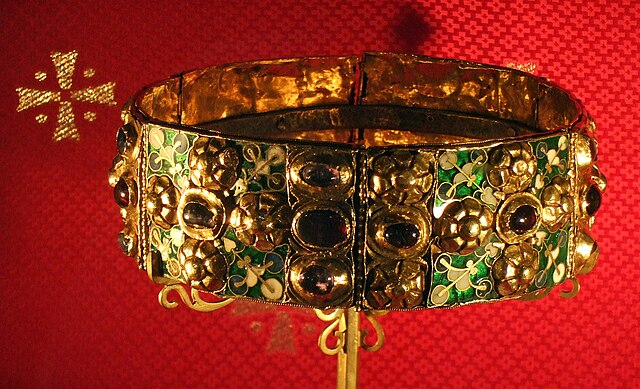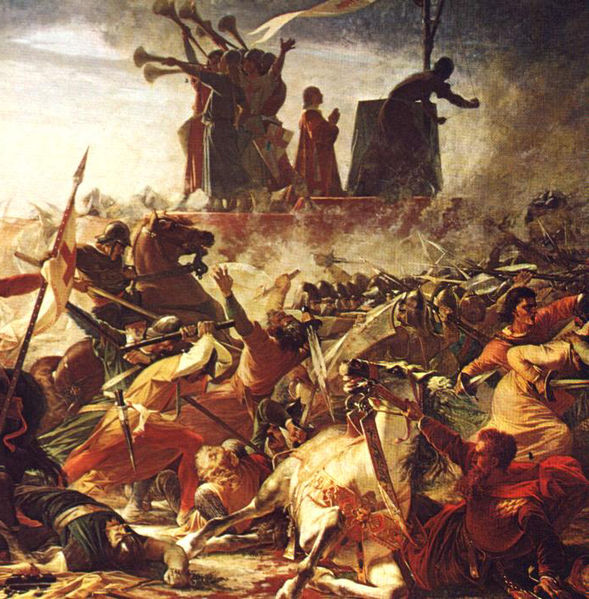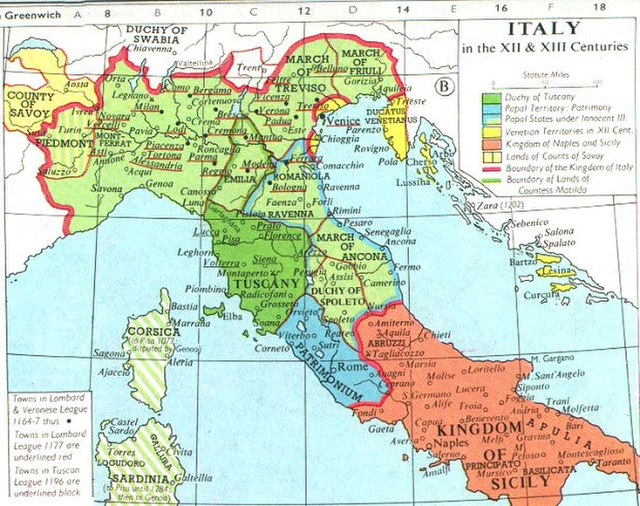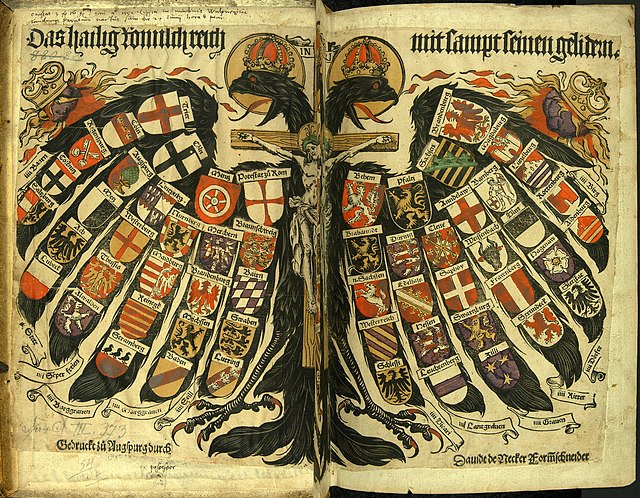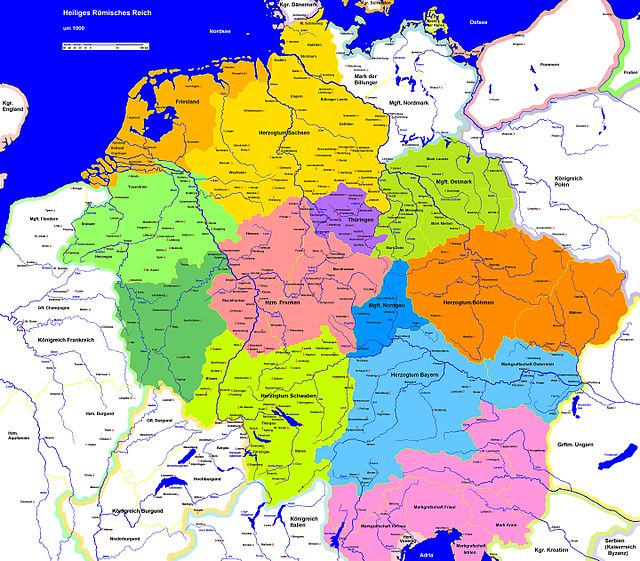Kingdom of Italy (Holy Roman Empire)
The Kingdom of Italy, also called Imperial Italy, was one of the constituent kingdoms of the Holy Roman Empire, along with the kingdoms of Germany, Bohemia, and Burgundy. It originally comprised large parts of northern and central Italy. Its original capital was Pavia until the 11th century.
The so-called Iron Crown of Lombardy, a votive crown from the Monza Cathedral said to contain a nail of the Passion, became a symbol of Lombard rule over Italy during the Late Middle Ages and Early Modern period. It was for centuries a symbol of the Kings of Italy
San Michele Maggiore, Pavia, where almost all the kings of Italy were crowned up to Frederick Barbarossa.
The defense of the Carroccio during the battle of Legnano by Amos Cassioli (1832–1891)
Imperial Italy (outlined in red) in the 12th century
The Holy Roman Empire, also known as the Holy Roman Empire of the German Nation after 1512, was a polity in Central and Western Europe, usually headed by the Holy Roman Emperor. It developed in the Early Middle Ages and lasted for almost 1,000 years until its dissolution in 1806 during the Napoleonic Wars.
The double-headed eagle with coats of arms of individual states, the symbol of the Holy Roman Empire (painting from 1510)
The Holy Roman Empire during the Ottonian dynasty
Henry begging Matilda of Tuscany and Hugh of Cluny in Canossa Castle (miniature in an illuminated manuscript kept in the Vatican Library, 1115)
Frederick Barbarossa, Holy Roman Emperor

